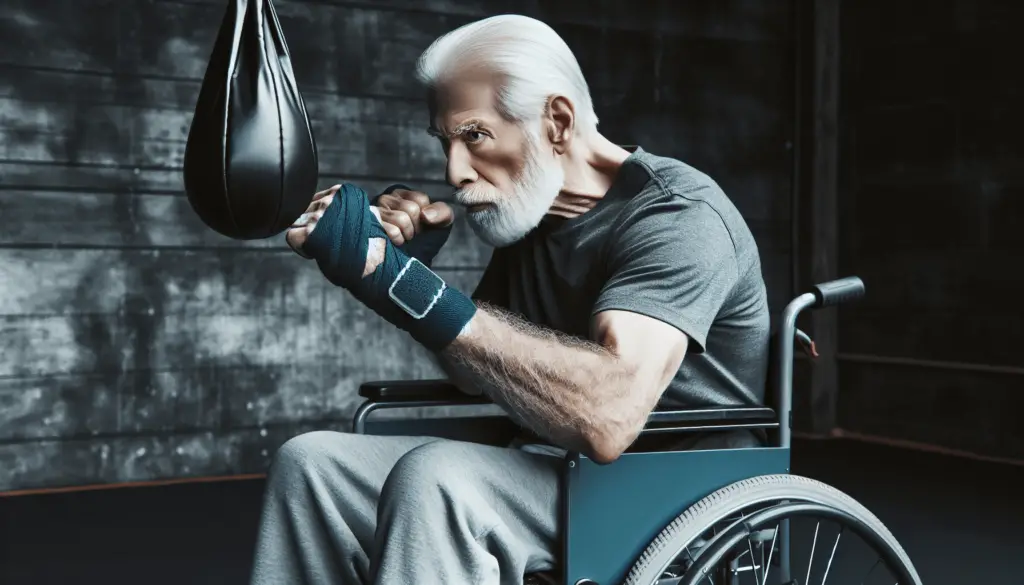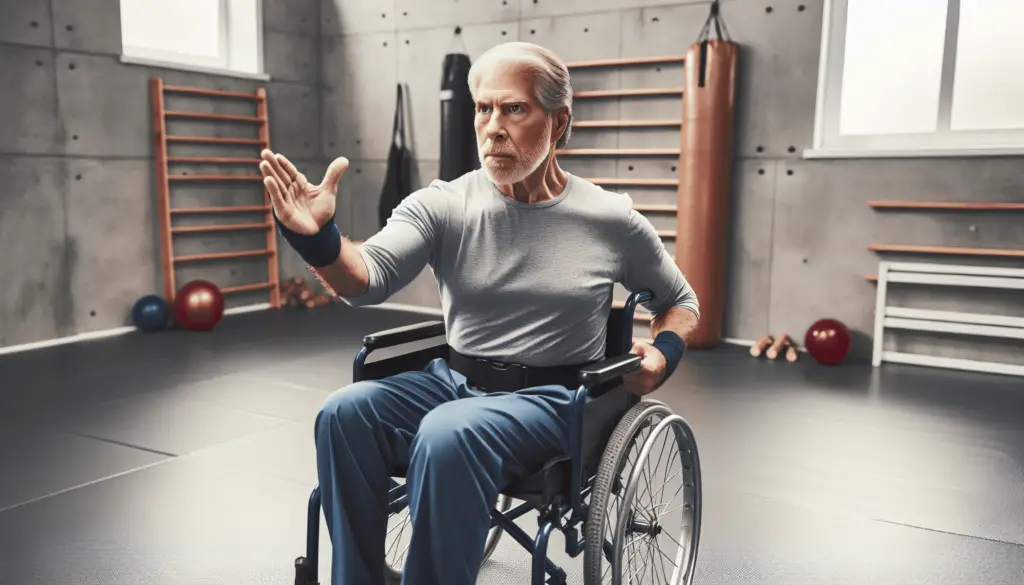Are you an elderly person or someone with a disability looking to learn self-defense strategies to protect yourself in various situations? In this article, we will discuss effective self-defense techniques tailored specifically for individuals who may be vulnerable due to age or physical limitations. Let’s explore ways to empower yourself and stay safe in any environment.
Understanding the Importance of Self-Defense for the Elderly and Disabled
It is essential for individuals who are elderly or have disabilities to learn self-defense techniques to protect themselves from potential threats. Being prepared and knowing how to defend yourself can help instill confidence and provide a sense of security in any situation. By learning effective self-defense strategies, you can be better equipped to handle unexpected events and protect yourself from harm.
Self-Defense and Empowerment
Self-defense is not just about physical skills but also about feeling empowered and confident in your ability to protect yourself. By learning self-defense techniques, you can increase your confidence and sense of control over your safety. Empower yourself by gaining knowledge and skills that will help you feel more secure in your daily life.
Choosing the Right Self-Defense Techniques
When selecting self-defense techniques as an elderly or disabled individual, it is important to consider your physical abilities, limitations, and comfort level. Not all self-defense techniques may be suitable for everyone, so it is crucial to choose strategies that you feel confident and comfortable using. Find techniques that work best for you and practice them regularly to build muscle memory and improve your reflexes.
Adaptability and Flexibility
As an elderly person or someone with a disability, it is important to choose self-defense techniques that are adaptable and flexible to suit your unique needs. Look for techniques that can be modified or customized based on your physical abilities and limitations. By choosing techniques that can be adjusted to fit your individual requirements, you can ensure that you are prepared to defend yourself effectively in any situation.

Common Self-Defense Techniques for the Elderly and Disabled
There are several self-defense techniques that can be particularly useful for elderly individuals or those with disabilities. These techniques focus on using leverage, momentum, and strategy rather than brute strength, making them suitable for individuals who may have physical limitations. Let’s explore some common self-defense techniques that can be effective for the elderly and disabled.
Joint Locks and Manipulation
Joint locks and manipulation techniques involve using leverage to control an attacker’s joints, effectively immobilizing them and preventing further aggression. These techniques can be highly effective for elderly individuals or those with disabilities, as they do not rely on physical strength. By using proper leverage and technique, you can neutralize an attacker without causing significant harm.
Pressure Points
Pressure points are sensitive areas on the body that, when targeted, can cause pain and discomfort to an attacker. By learning how to identify and exploit pressure points, you can effectively deter an assailant and create an opportunity to escape. Pressure point techniques are ideal for elderly or disabled individuals, as they do not require extensive physical strength to be effective.
Defensive Striking
Defensive striking involves using strikes and blows to defend against an attacker and create an opportunity to escape. This technique focuses on targeting vulnerable areas of the body, such as the eyes, throat, and groin, to incapacitate an assailant quickly. Defensive striking can be an effective self-defense technique for individuals who may not have the physical strength to engage in prolonged physical combat.
Verbal De-Escalation
Verbal de-escalation techniques focus on using clear communication and assertiveness to defuse a potentially violent situation. By remaining calm, assertive, and confident, you can effectively communicate with an attacker and create a window of opportunity to escape. Verbal de-escalation techniques are particularly useful for elderly individuals or those with disabilities who may not be able to rely on physical strength alone.
Training and Practicing Self-Defense Techniques
To effectively utilize self-defense techniques as an elderly or disabled individual, it is essential to undergo proper training and practice regularly. By consistently practicing self-defense techniques, you can build muscle memory, improve your reflexes, and increase your confidence in your abilities. Training under the guidance of a qualified instructor can help you hone your skills and ensure that you are prepared to defend yourself in any situation.
Finding a Suitable Self-Defense Class
When looking for a self-defense class as an elderly or disabled individual, it is important to find one that is tailored to your specific needs and abilities. Look for classes that focus on practical techniques, adaptability, and empowerment rather than physical strength alone. A suitable self-defense class will take into account your unique circumstances and provide you with the knowledge and skills you need to protect yourself effectively.
Practicing Consistently
Consistent practice is essential for mastering self-defense techniques and maintaining proficiency in defending yourself. Set aside regular time to practice your skills, whether it be at home, in a class, or with a partner. By practicing consistently, you can refine your techniques, build confidence in your abilities, and ensure that you are prepared to defend yourself in any situation.

Self-Defense Equipment for the Elderly and Disabled
In addition to learning self-defense techniques, using self-defense equipment can provide an added layer of protection for elderly individuals or those with disabilities. There are several types of self-defense equipment that can be particularly useful for vulnerable individuals looking to enhance their personal safety. Let’s explore some common self-defense equipment suitable for the elderly and disabled.
Personal Alarms
Personal alarms are small devices that emit a loud sound when activated, attracting attention and deterring potential attackers. These devices are particularly useful for elderly individuals or those with disabilities who may not be able to rely on physical strength alone. By carrying a personal alarm, you can alert others to your situation and create a distraction that allows you to escape from a threatening situation.
Pepper Spray
Pepper spray is a non-lethal self-defense tool that can temporarily incapacitate an attacker by causing irritation to the eyes, nose, and throat. Pepper spray is lightweight, easy to carry, and simple to use, making it an ideal self-defense option for elderly or disabled individuals. By carrying pepper spray, you can create a safe distance between yourself and an assailant and create an opportunity to escape.
Walking Canes and Sticks
Walking canes and sticks can serve as effective self-defense tools for elderly individuals or those with disabilities. These items can be used to create a barrier between yourself and an attacker, block incoming strikes, or deliver powerful strikes to fend off an assailant. Walking canes and sticks are discreet, versatile, and easy to carry, making them convenient self-defense options for vulnerable individuals.
Assertiveness and Confidence in Self-Defense
In addition to learning self-defense techniques and using self-defense equipment, it is essential for elderly individuals or those with disabilities to cultivate assertiveness and confidence in their ability to protect themselves. By projecting confidence, assertiveness, and awareness of your surroundings, you can deter potential attackers and create a formidable presence that may prevent conflicts from escalating. Let’s explore ways to cultivate assertiveness and confidence in self-defense.
Confidence in Body Language
Confidence in body language plays a crucial role in projecting assertiveness and deterring potential attackers. Stand tall, maintain eye contact, and avoid slouching or appearing timid to project confidence in your abilities. By adopting a confident posture and demeanor, you can create a strong presence that signals to others that you are not an easy target.
Vocal Assertiveness
Vocal assertiveness involves using clear, assertive communication to set boundaries, express your needs, and deter potential threats. Practice speaking assertively and confidently, using a firm tone of voice and maintaining eye contact to convey strength and determination. By mastering vocal assertiveness, you can effectively communicate your intentions and establish yourself as a capable individual who will not be easily intimidated.
Conclusion
In conclusion, self-defense strategies for the elderly and disabled are essential for protecting yourself and staying safe in any situation. By understanding the importance of self-defense, choosing the right techniques, training consistently, utilizing self-defense equipment, and cultivating assertiveness and confidence, you can empower yourself and enhance your personal safety. Remember that self-defense is not just about physical skills but also about feeling empowered, confident, and in control of your safety. Stay informed, stay prepared, and stay safe.
